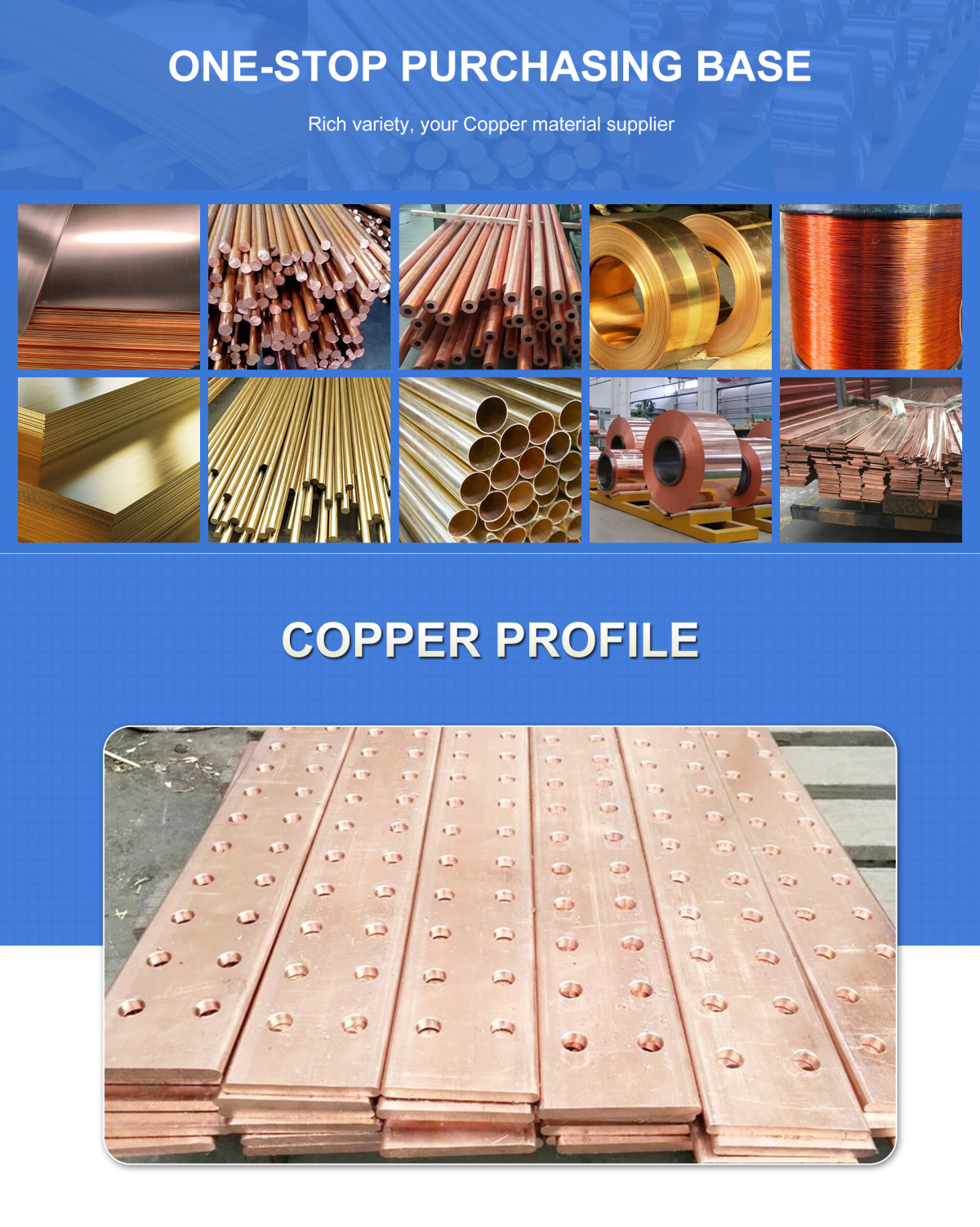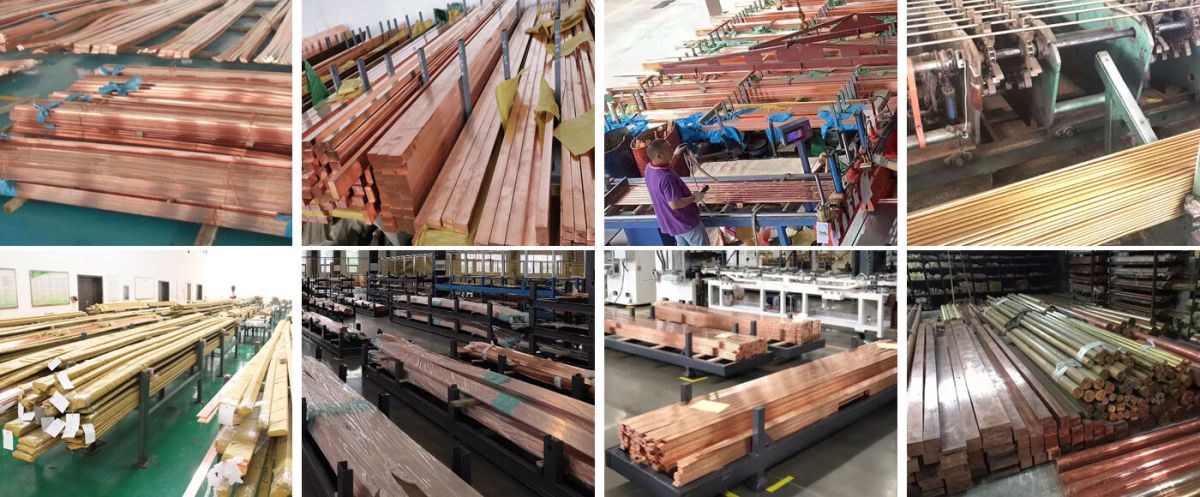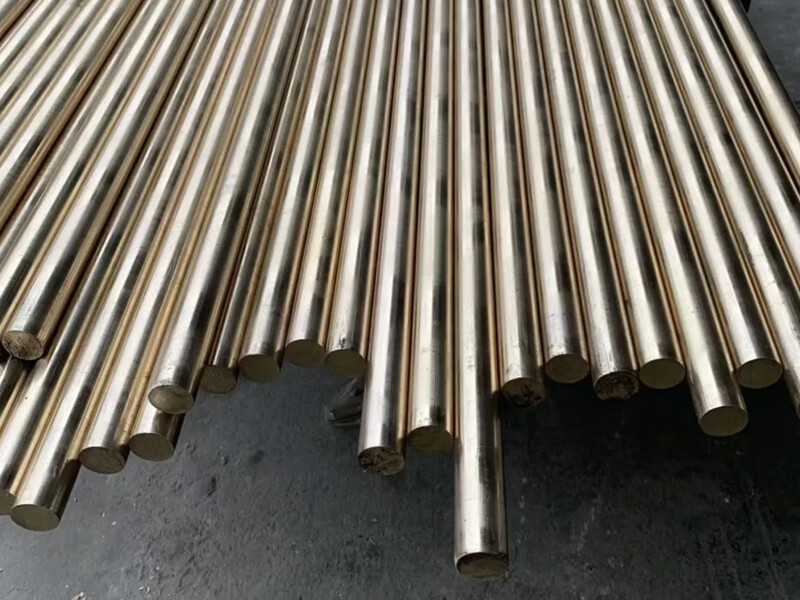
Size Range
Diameter: Drawn rods range from 3mm to 500mm in diameter, depending on the production process (extrusion or drawing).
Length: Standard lengths up to 30 meters, custom cuts available.
Tolerances: For example, a 10mm diameter copper rod has a tolerance of ±0.0045 inches (approximately ±0.11mm), and length tolerances vary depending on the application.
International Standards
ASTM Standards:
ASTM B21: Specifies the chemical composition and mechanical properties of copper alloy rods.
ASTM B111/B111M: Corrosion resistance and dimensional requirements for C44300 tubes and rods, particularly for heat exchangers.
European Standard: EN 12163:2011 covers the manufacturing and testing requirements for copper alloy rods.
Chinese Standard:
GB/T 4423-2007: Specifies the dimensional tolerances and surface quality of drawn copper rods, with a minimum diameter of 3mm.
GB/T 5231-2012: defines the grades and compositions of processed copper alloys, corresponding to C44300.
Copper (Cu): 69.0% - 73.0% (most literature supports 69.0% - 71.0%, but some standards such as EN give 70.0% - 73.0%).
Tin (Sn): 0.8% - 1.3%, used to enhance corrosion resistance.
Zinc (Zn): Balance, usually 25% - 29%.
Arsenic (As): 0.02% - 0.06%, inhibits dezincification corrosion.
Impurities: Lead (Pb) ≤ 0.05%, Iron (Fe) ≤ 0.10%, Nickel (Ni) ≤ 0.5%, Total impurities ≤ 0.3%.
Physical Properties
Density: 8.53 g/cm³ (most sources), 8.3 g/cm³ in some sources.
Melting Point: Liquidus 940°C (1720°F), Solidus 900°C (1650°F).
Thermal Conductivity: 64 - 110 W/m·K.
Electrical Conductivity: 25% - 28% IACS (International Annealed Copper Standard).

The production process and product advantages of C44300 copper rod are as follows:
1. Production process
Smelting and continuous casting
The raw materials (waste brass, waste copper, zinc ingots, etc.) are smelted in an industrial frequency furnace, and after the copper liquid is generated, it enters the continuous casting stage, and the cooling circulating water system is used to cool the copper rod blank. Large-tonnage horizontal continuous casting technology can improve the stability of ingot quality and achieve environmentally friendly production.
Extrusion molding
The large-tonnage reverse extrusion technology (such as 38MN reverse extruder) is used to hot extrude or cold process the continuous casting blank. This technology can cover the production of multiple grades, the product has high density and excellent strength, and the weight of a single ingot can reach nearly 1 ton, which significantly improves efficiency. The copper rods produced by the extrusion process have high tensile strength, hardness and straightness, which are better than ordinary cast rods.
Subsequent processing
Annealing: The copper rods after cold processing need to be annealed at low temperature to eliminate stress and prevent stress corrosion cracking.
Surface treatment: The copper oxide skin is removed by skinning, and the combined drawing technology is used to straighten and cut the length to reduce surface damage and improve the yield rate.
Short process optimization
Some companies use the "copper wire rod-continuous extrusion" short process to replace the traditional "ingot-hot extrusion-stretching" process, improve the level of automation and reduce energy consumption.
2. Product advantages
Excellent corrosion resistance
C44300 is arsenic-tin brass (Cu-Zn-Sn-As). Trace arsenic (0.03-0.06%) can inhibit dezincification corrosion and significantly improve corrosion resistance. It is suitable for corrosive environments such as seawater and chemical liquids. In recent years, the corrosion resistance has been further optimized by adding elements such as boron and nickel.
High mechanical properties
Tensile strength ≥410 MPa, elongation ≥8%, with both high strength and toughness.
It still maintains good mechanical properties at high temperatures and is suitable for pressure-resistant and high-temperature resistant parts.
Excellent processing performance
Excellent cold and hot processing performance, can be stamped, turned, welded and other complex processing.
High ductility is suitable for manufacturing precision parts (such as automotive synchronizer rings, medical parts, etc.). Wide range of applications
Mainly used in corrosion-resistant scenarios such as heat exchanger condenser tubes, chemical equipment conduits, and marine engineering components.
In the construction field, it is used for supporting structures due to its high strength and high rigidity.
High cost-effectiveness
Low material cost, easy processing, and short process technology reduce production costs, suitable for large-scale production.
Q1:Do you provide samples? Is it free or extra?
A1:Yes, we can provide samples free of charge and the customer will pay the freight.
Q2:What if I don't have export experience ?
A2:We have reliable forwarder agent which can ship items to you by sea/air/Express to your doorstep. Any way, we will help you choose the most suitable shipping service.
Q3:How long is your lead time?
A3:If it is in stock, it is usually 5-10 days. Or, if there is no inventory, 15 days, depending on the quantity.
Q4:What are your terms of payment?
A4:30% T/T deposit in advance, 70% T/T balance within 5 days after B/L copy, 100%.Irrevocable L/C at sight, 100% Irrevocable L/C after receive B/L 30-120 days, O/A.
Q5:How is your technical support?
A5:We provide lifetime online support through Whatsapp/ Skype/ Wechat/ Email. Any problem after delivery, we will offer you call anytime.
Welcome To Your Inquiry
What can we help you?
RELATED PRODUCTS











